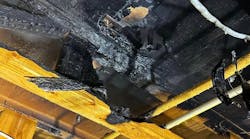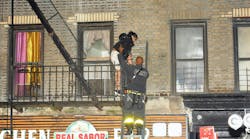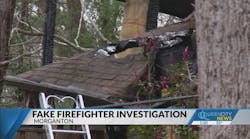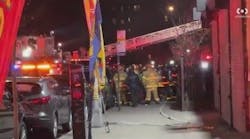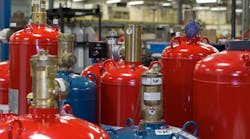May 19--PRINCE GEORGE -- Last year, Yvonne Goodman buried her sister almost two months after burying her father.
Goodman, a nurse, received a call Aug. 26 from her sister telling her that this would be the last time they would talk.
Goodman called 911 before she raced the 13.5 miles to her sister's home in Birchett Estates. When she got there, her sister was still breathing, but was actively seizing.
Goodman called 911 again.
It would be nearly a half hour from the first 911 call before an ambulance crew would arrive.
Goodman's sister died that same day.
According to EMS records, a police officer arrived at the home at 4:45 p.m., 18 minutes after the call was dispatched. A Fort Lee ambulance crew arrived 23 minutes after the first 911 call, at 4:50 p.m.
Goodman could not understand how it took almost a half hour before her sister received medical attention.
"I hope you realize that we are not a small farming community anymore," Goodman told the Prince George Board of Supervisors in November 2013.
And she wasn't alone.
"Citizens ... voiced their concerns about lengthy response times from both Fire and EMS units housed at current stations," James B. Owens, director of Fire and EMS, wrote in a January report. "Many examples given were delayed calls for service that eventually resulted in citizens' deaths."
Prince George County is going through a transition in emergency services in what was once a largely rural county that relied on volunteer firefighters and paramedics.
Now the county is growing and can no longer reliably depend on volunteers to carry the entire burden for emergency services. Response times have increased, putting citizens at risk while emergency officials work to improve service.
Other citizens have sounded off complaints about skyrocketing insurance premiums. Changes to the standards insurance companies use to gauge how safe a particular home is left many homeowners in the state Route 10 area with a 100-percent to 125-percent increase in insurance rates. An estimated 1,551 homes in this area were outside a 5-mile radius from a fire station and were rated at the highest risk level.
Gabrielle Heath, who lives in River's Edge, saw her insurance, and that of many of her neighbors in the Beechwood Manor and Jordan on the James subdivisions, go up.
"One person had been canceled, another had gone up a tremendous amount, almost 100 percent, another 200 percent," Heath said. "In River's Edge, most of us are elderly, and have lived here for years and years and years. With everything going up, there's going to be a huge hardship."
With two more subdivisions expected to join the subdivisions in the area in the next couple of years, the number of affected people could keep growing.
"With your stations being as spread out as far as they are, you have to start filling those gaps," Owens said.
The rural county seems to be approaching a tipping point. The growing suburban elements in Prince George have increasingly pulled resources into certain parts of the county, forcing a transition that many rural counties in America are experiencing, Owens said.
"We are going through the same growth challenges that every other rural county in America is having. It is such a widespread issue nationwide. With the decline in revenues and the economy the way it is, it is just hard for localities to continue to fund these type of core services," Owens said.
At the end of the day, how well the department is able to balance the need for service and the resources they are given is measured in minutes and seconds.
In 2013, Prince George Fire and EMS handled 2,810 of 2,994 EMS calls for service, the 2013 Fire and EMS annual report said.
Of those answered EMS calls, only 31 percent of the response times to the scene were less than the national standard of 8 minutes and 59 seconds. Forty percent of the response times were between 9 and 15 minutes, while another 29 percent were greater than 15 minutes.
The department was able to reduce the average response time from 12 minutes and 50 seconds to 11 minutes and 45 seconds, according to the report.
Surrounding localities are still relied on to answer calls.
"We are expending a lot of energy with our neighbors and they have been gracious enough so far and have not gotten discouraged. But we do need to do better with them," County Administrator Percy Ashcraft told the Board of Supervisors last year.
In 2013, 232 calls for service were dispatched with no staffed unit readily available to handle the call, the 2013 annual report said. Prince George was able to cover 98 of those calls and surrounding jurisdictions handled 134 of them.
Many of the response times for mutual aid calls were in excess of 30 minutes, the 2013 report read.
Over the past several decades, longer response times have become more unacceptable as the firefighting game changed.
"We have a saying in the fire department, 'It is not your grandfather's fire anymore,' " Owens said.
Back in the day, Owens said, everything was made out of wood, mortar, paper or cotton.
"It took a long time to burn. Your long response times were not that big of an issue," Owens said.
Modern construction materials are cheaper to use and take less time to put up.
They are also completely sturdy -- until there is a fire, Owens said.
"They are fine under normal conditions. But we don't operate under normal conditions," Owens said.
Today, fires double in size every minute. Plastic polymers, the material with which many modern items are made, act like gasoline once you burn them, Owens said.
Things like gang nails, OSB boards and pre-manufactured trussed roofs all changed how fast fires must be fought.
Gang nails for roofs and floors do not hammer boards together like they did in the past. Instead, machines roll the nails into a quarter-of-an-inch of the wood, making those structures likely to collapse after 15 minutes in a fire.
"Now, in under 15 minutes, if you don't have that incident under control, you gotta start backing your folks out because you know that ceiling or floor is going to collapse," Owens said.
OSB boards fused with flammable glue are the backbone to most modern roofs. Recent approvals have allowed OSB board to also be the backbone to most modern stairwells, making fighting fires on the second floor that much more challenging for firefighters.
Standards that govern response times for areas like Prince George are reviewed every four to five years. That usually leaves years between when the construction changes are made and when they are reviewed.
"There is a disconnect there. I understand, they are in business and trying to turn a profit. Most of them are trying to build a decent product," Owens said of homebuilders. "But some of the changes that are going on there don't necessarily realize the impact of them on our side."
Modern life has put additional strain on a volunteer system. Based on the 2010 census, the county population grew to 35,725, which was a net increase of 2,800 people from 2000.
Despite that growth, the county has had to hire paid firefighter-medics to keep up with the increased call load. Owens explained the trend by pointing to the demands and training requirements necessary to be a firefighter or EMT.
"There are so many demands and requirements just to be a volunteer now that didn't used to exist," Owens said.
It takes 18 months for certain trainees to get their certifications. The classes, which run at least six months, are two nights a week and every other Saturday.
The paramedic program is a two-year college program. Every two years, paramedics must also get 72 hours of continuing education, and they must serve 24 to 48 hours a month.
"That is a lot to ask somebody for just being a volunteer," Owens said. "The odds of getting somebody between [the ages of] 25 to 45 is very slim. We very rarely get a person that has no training at all, has no affiliation with a previous firefighting or EMS organization, that just comes in and says, 'I want to do this.' "
At the same time, Prince George has increasingly become a suburban bedroom community where more residents are likely to commute to nearby cities to work, leaving less time to volunteer.
"You used to get a call or two a week. Now it is a call or two a day," Owens said. "Folks can't just leave the house, answer a call and come back to their farm. It just isn't like that anymore."
Despite the changes, the expectations have remained the same. Citizens still expect quick response times and lower insurance premiums.
Over the past year, answers to those complaints have come in the form of significant changes to the Fire and EMS department.
Copyright 2014 - The Progress-Index, Petersburg, Va.
